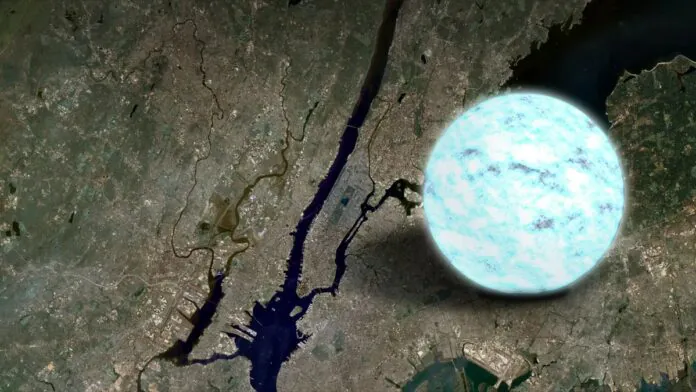© ROOT-NATION.com - Use of content is permitted with a backlink.
Researchers have discovered an unusual neutron star that emits radio signals and rotates very slowly, making one revolution every 76 seconds. The uniqueness of the star is that it is located in the neutron stars graveyard, where pulsations are not expected. The discovery was made using the MeerKAT radio telescope in South Africa.
Initially, the star was detected by a single pulse. It was then possible to confirm the presence of several pulses, using simultaneous consecutive eight-second images to confirm its position.
Neutron stars are extremely dense supernova remnants formed by the explosions of massive stars. Scientists know about 3,000 such stars in our galaxy. However, the new discovery is unlike anything else seen before. The team believes that it may belong to the theoretical class of ultra-long-lived magnetars – stars with extremely strong magnetic fields.

The head of the study, Dr. Manisha Caleb, said: “Amazingly we only detect radio emission from this source for 0.5% of its rotation period. This means that it is very fortuitous that the radio beam intersected with the Earth. It is therefore likely that there are many more of these very slowly spinning sources in the Galaxy which has important implications for how neutron stars are born and age. The majority of pulsar surveys do not search for periods this long and so we have no idea how many of these sources there might be. In this case, the source was bright enough that we could detect the single pulses with the MeerTRAP instrument at MeerKAT.”
The recently discovered neutron star is called PSR J0901-4046 and appears to have at least seven different types of pulsars, some of which are very periodic. It demonstrates the characteristics of pulsars, magnets with a long period of time, and even fast radio bursts – short flashes of radio emission in random places in the sky. This is the beginning of a new class of neutron stars. How it relates to other classes remains to be seen. Most likely, there are many more. We just need to search.
You can also help Ukraine fight with Russian occupants via Savelife or via an official page of the National Bank of Ukraine.
Read also:


